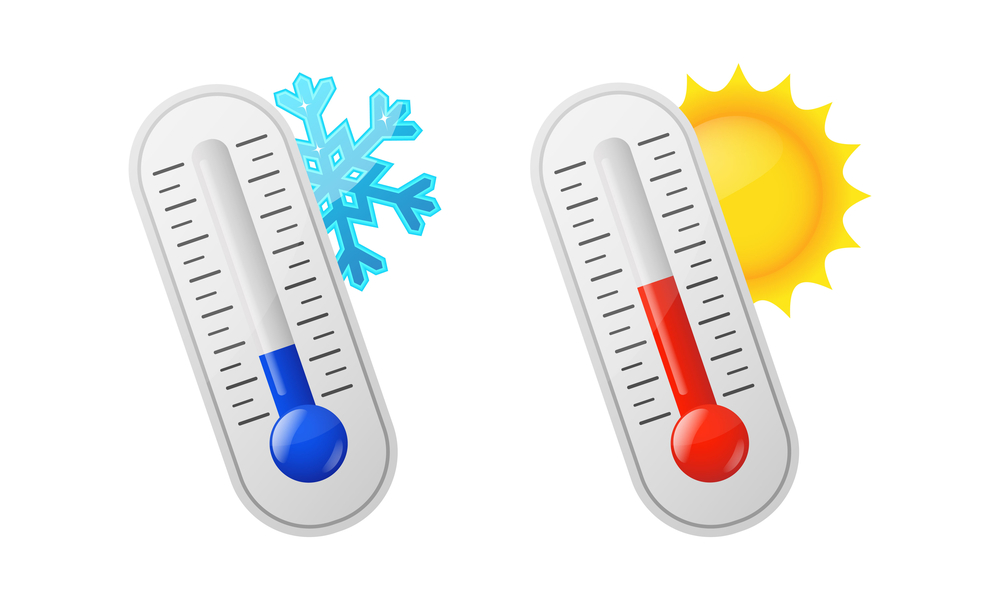OSHA Heat Exposure Standards and Dealing with Extreme Work Temperatures

Extreme hot and cold temperatures at work can cause employee illness or injury.
What an employer is required to do and ten tips to remain proactive and compliant.
When employees face exposure to extreme hot or cold conditions during their work activities, their attention can be diverted by these conditions, leading to potential illness or injuries. Maintaining focus on tasks is vital, as distractions in extreme weather conditions can put workers at risk. To ensure compliance with OSHA heat exposure standards, it’s crucial to understand what an employer is required to do.
Under the OSHA General Duty Clause, Section 5(a)(1), employers are required to provide their employees with a place of employment that “is free from recognized hazards that are causing or likely to cause death or serious harm to employees.” The courts have interpreted OSHA’s general duty clause to mean that an employer has a legal obligation to provide a workplace free of conditions or activities that either the employer or industry recognized as hazardous and cause or are likely to cause death or serious physical harm to employees when there is a feasible method to abate the hazard. This includes heat-related or cold-related hazards that are likely to cause death or serious bodily harm.
Here are ten tips on how to deal with extreme temperatures at work to help avoid illness or injury.
Recognize Exposure Levels
- Identify the threshold temperature for heat or cold exposure (e.g., 80 degrees for most states).
- Consider local climate conditions and variations.
- Evaluate specific job tasks for potential heat or cold-related hazards.
- Document risks and develop a comprehensive Job Hazard Analysis.
- Update the analysis regularly, especially when conditions change.
Adopt OSHA Recommendations
- Follow OSHA’s guidelines for heat exposure, incorporating elements like “water, rest, and shade.”
- Implement acclimatization programs for workers unfamiliar with extreme temperatures.
Weather-Driven Adjustments
- Monitor weather conditions regularly and set alerts on smartphones.
- Update your plans according to local changes in weather conditions daily or even hourly.
- Adjust work plans based on changes in temperature, humidity, or other relevant factors.
Training for Management and Workers
- Provide thorough Job Hazard Analysis training to management and workers.
- Emphasize the importance of recognizing and addressing heat or cold-related risks.
Provision of Adequate Resources
- Provide required personal protective equipment (PPE) to prevent illness or injury from heat exposure, including wearable PPE such as auxiliary cooling systems or personal cooling systems (e.g., water-cooled or air-cooled garments, cooling vests and wetted outer garments).
- Because of varying levels of heat, determine the best combination of “water, rest, and shade” to implement daily per the OSHA website’s current recommendations. 1
- When possible, use an insulated version of personal protective equipment (PPE) to protect from both work hazards and the cold, including:
- Waterproof boots that are slip-resistant for icy surfaces
- Coveralls made of flexible material for ease of movement
- Wind-resistant coats with elastic wrist and waistbands to keep out air and moisture (snow)
- Gloves with highly efficient yet thin insulation to maintain dexterity 2
- Wear layered clothing that provides better insulation and as needed, is removed to prevent becoming too hot
- Avoid tight clothing that reduces circulation to hands and feet or restricts movement, which can be a hazard
- Protect the ears, face, hands and feet and wear a stocking hat to help keep the whole body warmer
- Prevent clothing, boots, and gloves from becoming wet
- Carry extra socks, gloves, hats, jacket, blankets and a change of clothes in if something gets wet 2
Acclimatization Programs
Incorporate acclimatization programs for all workers, especially if they are new to specific weather-exposed tasks or are unaccustomed to extreme temperatures. Acclimatization programs should include:
- Regular water breaks regardless of extreme heat or cold to avoid dehydration
- Periodic rest breaks in either extreme heat or cold conditions
- Occasional shade or warming breaks depending on conditions
- Access to unlimited cool water and ice packs
- Access to warm drinks and warmers
- Gradually introduce employees to the work environment to help their bodies adapt over time.
Weather-Related First Aid Training
- Equip local staff with first aid training to address potential injuries resulting from extreme conditions.
- Establish and train employees on emergency response protocols for quick assistance.
- Educate and Enforce Standards
- Regularly educate employees on company and OSHA standards.
- Enforce adherence to safety protocols to ensure compliance.
Make Regular Risk Assessment Updates
- Periodically reevaluate the risk assessment and communicate any changes.
- Encourage open communication with employees for insights and suggestions regarding safety improvements.
By adhering to these tips, employers can ensure alignment with OSHA heat exposure standards and foster a safer working environment, thereby diminishing the potential for illnesses and injuries associated with extreme temperatures. Consistent communication and comprehensive training play pivotal roles in nurturing a robust safety culture within the workplace.
- https://www.osha.gov/heat-exposure/water-rest-shade
- https://www.cdc.gov/niosh/npptl/pdfs/ColdStressFinal-508.pdf


